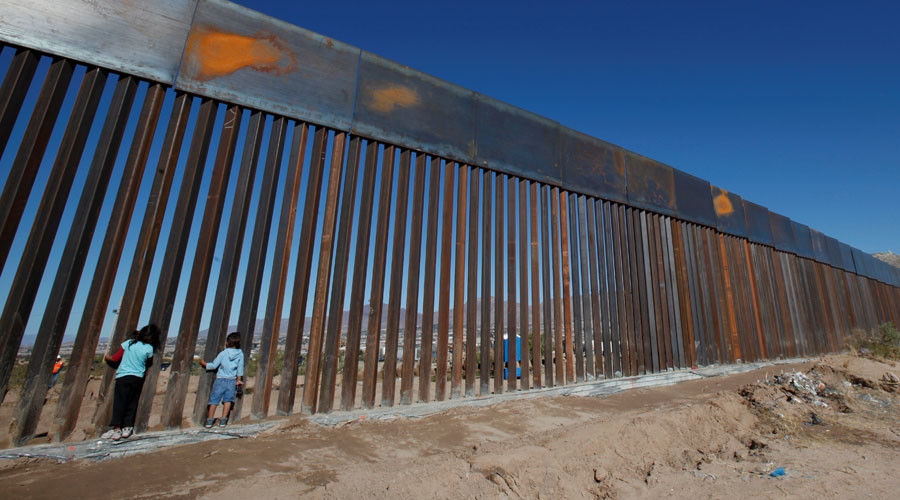
Trump, who announced on Twitter that a “big day” was planned on national security on Wednesday, is set to ban the entry of refugees into the US for “at least four months,” AP reported, citing a representative of a public policy organization that monitors refugee issues. There is likely to be an exception for Christians fleeing Muslim-majority nations.
Another order will block visas from being issued to individuals from Syria, Iraq, Iran, Libya, Somalia, Sudan, and Yemen, according to Reuters, citing presidential aides and experts speaking on condition of anonymity. On the campaign trail, Trump proposed a temporary ban on Muslims entering the US, arguing that the measure would help shield Americans from jihadist attacks.
Stephen Legomsky, who was chief counsel of the US Citizenship and Immigration Services in the Department of Homeland Security during the Obama administration, said the president had the authority to limit refugee admissions and the issuance of visas to certain countries.
“From a legal standpoint, it would be exactly within his legal rights,” Legomsky told Reuters.
“But from a policy standpoint, it would be terrible idea because there is such an urgent humanitarian need right now for refugees,” he added.
Another immigration expert, Hiroshi Motomura, noted, however, that the visa ban could meet legal action from detractors, since all six countries mentioned have Muslim majority populations.
“His comments during the campaign and a number of people on his team focused very much on religion as the target,” Motomura told Reuters.
Trump is said to still be mulling over the details of the plans, and is expected to sign the first actions during a visit to the Department of Homeland Security on Wednesday.
There are allegedly plans to hire 5,000 more US border agents and a call for local law enforcement to work with federal immigration authorities, two unnamed congressional aides told Reuters. Trump is also likely to cut the refugee cap in half for fiscal year 2017, down to 50,000, they added.
The Obama administration said in August that it met its goal of admitting 10,000 Syrian refugees in the 2016 fiscal year, and was looking to increase the target by a few thousand in 2017.
“While refugee admissions are only a small part of our broader humanitarian efforts in Syria and the region, the president understood the important message this decision would send, not just to the Syrian people but to the broader international community,” then-National Security Advisor Susan Rice said in a statement.
“We will admit at least 85,000 refugees in total this year, including vulnerable individuals and families from Burma, Democratic Republic of the Congo, El Salvador, Iraq, Somalia, Ukraine, and many other countries,” she added.
The United States took in 29 Syrian refugees in fiscal 2011, 31 in fiscal 2012, 36 in fiscal 2013, 105 in fiscal 2014 and 1,682 in fiscal 2015, according to US State Department statistics. In 2016, the number jumped to 12,587.
Critics slammed Obama’s decision to increase the number of Syrian refugees admitted to the country amid concerns over potential terrorist attacks.
‘Pay for the Wall’ promise
To restrict illegal immigration, Trump also famously promised to build a wall along the southern border with Mexico, and that Mexico would pay for it, provoking a war of words on the campaign trail.
Trump said construction of the wall would first be paid for with a bill approved by Congress, and Mexico will later reimburse Washington.
“Any money spent on building the Great Wall (for sake of speed), will be paid back by Mexico later!” he wrote on Twitter earlier this month.
Trump is due to meet Mexican President Enrique Pena Nieto at the White House next week.
A number of Republican lawmakers believe that Trump has authority under the Secure Fence Act of 2006 to commence construction on the wall.
The law, backed by then-President George W. Bush, mandated 700 miles of “reinforced fencing” on the US-Mexico border along with enhanced surveillance systems, which came to be known as a “virtual fence.” The full complement of barriers was never completed, and GOP lawmakers believe that the law provides sufficient authority to complete a full border wall.
 Escambray ENGLISH EDITION
Escambray ENGLISH EDITION





Escambray reserves the right to publish comments.